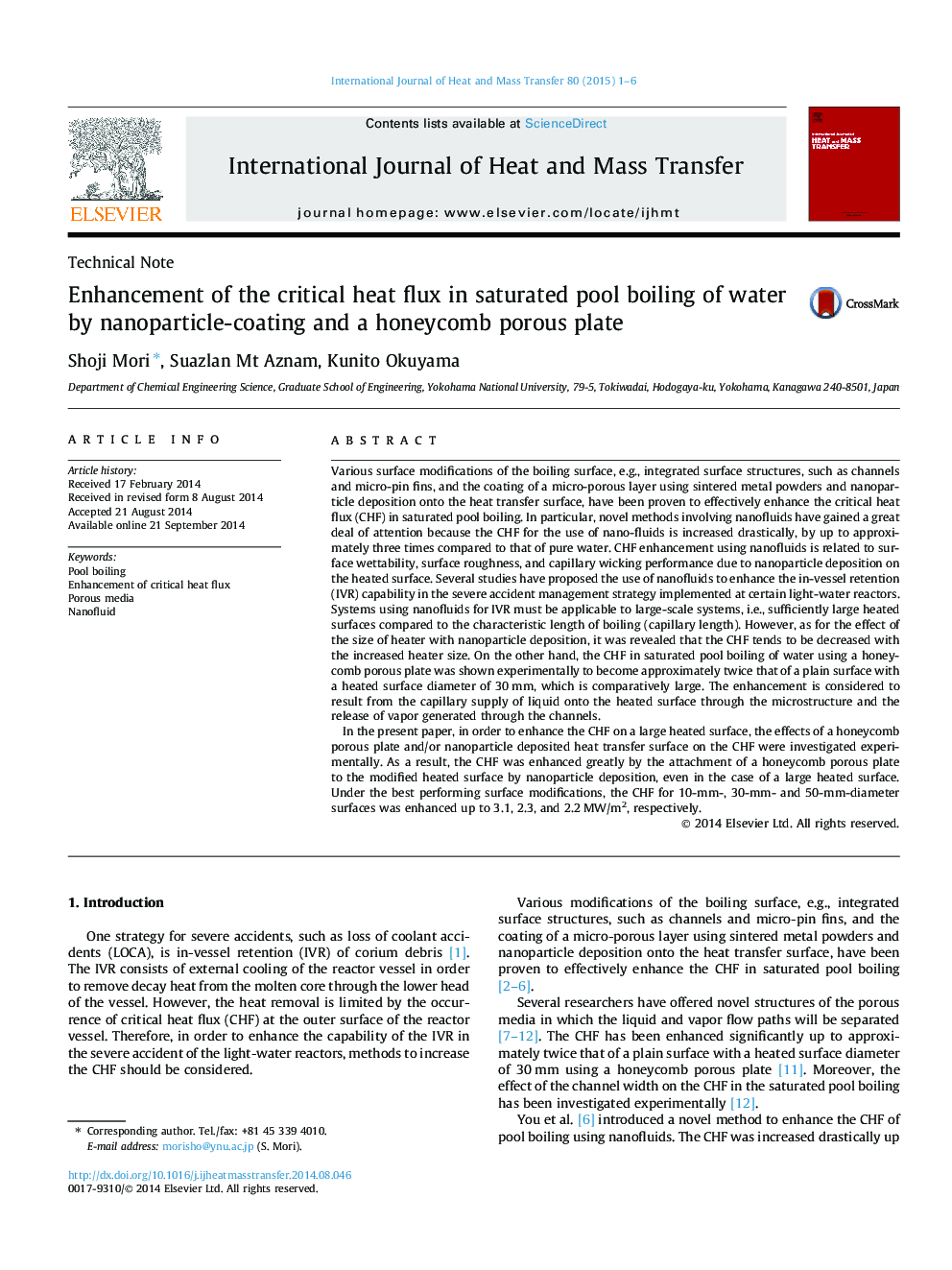| کد مقاله | کد نشریه | سال انتشار | مقاله انگلیسی | نسخه تمام متن |
|---|---|---|---|---|
| 657318 | 1458062 | 2015 | 6 صفحه PDF | دانلود رایگان |
Various surface modifications of the boiling surface, e.g., integrated surface structures, such as channels and micro-pin fins, and the coating of a micro-porous layer using sintered metal powders and nanoparticle deposition onto the heat transfer surface, have been proven to effectively enhance the critical heat flux (CHF) in saturated pool boiling. In particular, novel methods involving nanofluids have gained a great deal of attention because the CHF for the use of nano-fluids is increased drastically, by up to approximately three times compared to that of pure water. CHF enhancement using nanofluids is related to surface wettability, surface roughness, and capillary wicking performance due to nanoparticle deposition on the heated surface. Several studies have proposed the use of nanofluids to enhance the in-vessel retention (IVR) capability in the severe accident management strategy implemented at certain light-water reactors. Systems using nanofluids for IVR must be applicable to large-scale systems, i.e., sufficiently large heated surfaces compared to the characteristic length of boiling (capillary length). However, as for the effect of the size of heater with nanoparticle deposition, it was revealed that the CHF tends to be decreased with the increased heater size. On the other hand, the CHF in saturated pool boiling of water using a honeycomb porous plate was shown experimentally to become approximately twice that of a plain surface with a heated surface diameter of 30 mm, which is comparatively large. The enhancement is considered to result from the capillary supply of liquid onto the heated surface through the microstructure and the release of vapor generated through the channels.In the present paper, in order to enhance the CHF on a large heated surface, the effects of a honeycomb porous plate and/or nanoparticle deposited heat transfer surface on the CHF were investigated experimentally. As a result, the CHF was enhanced greatly by the attachment of a honeycomb porous plate to the modified heated surface by nanoparticle deposition, even in the case of a large heated surface. Under the best performing surface modifications, the CHF for 10-mm-, 30-mm- and 50-mm-diameter surfaces was enhanced up to 3.1, 2.3, and 2.2 MW/m2, respectively.
Journal: International Journal of Heat and Mass Transfer - Volume 80, January 2015, Pages 1–6
